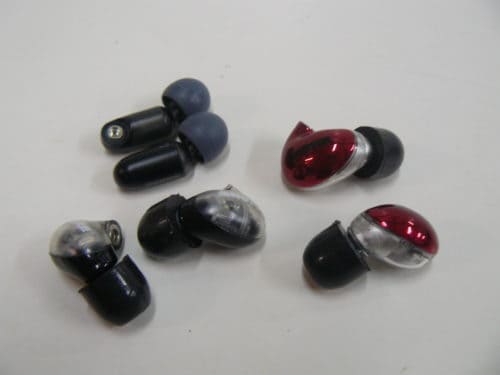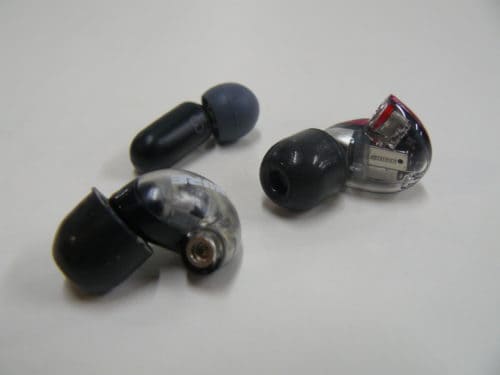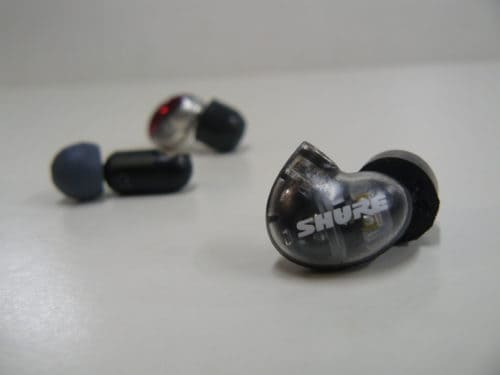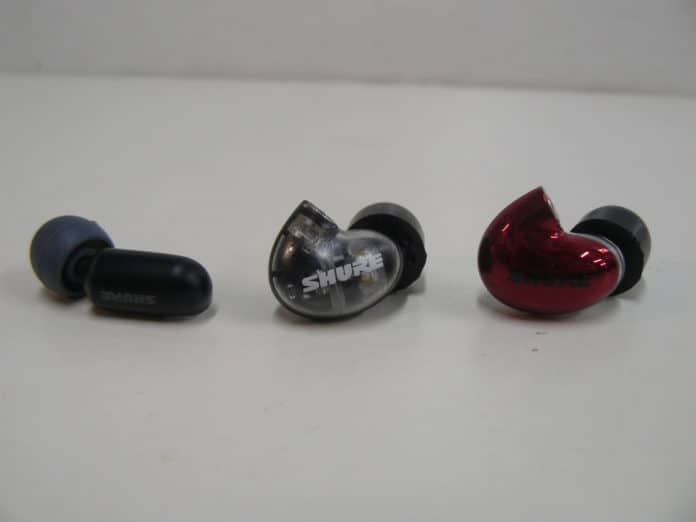Over the past few weeks, I have been checking out the new Aonic earphone series from Shure. They’ve released the Aonic 3, 4, and 5, all of which I’ve reviewed here on Major HiFi. I’ve enjoyed each model in different ways and through multiple applications. However, there comes the question of which one is the best. As for most of how these comparison reviews go, it’s hard to be objective, especially with a line such as the Aonic series. So let’s get down to the nitty-gritty and decipher what exactly these earphones are about, and which one will work best for you.

What You Get
Each model comes packages with a variety of contents that include a plethora of ear tips, adapters, and storage cases. In my reviews, I point out how appreciative I am that Shure includes not only different sizes of tips but different styles. Most earphones and IEMs only include maybe one or two styles, but with the Aonic series, you’ll receive foam, rubber, triple-flange, and yellow foam tips. Each pair also includes a 3.5mm MMCX style cable with a built-in microphone, as well as a quarter-inch jack.
The only major difference you’ll find between the three earphones is in attachable nozzles. The Aonic 5 has a few different nozzles that modify the sound signature in different ways. If you prefer an earphone that has more options implemented, then the Aonic 5 has you covered with its nozzle selection, but I’d also argue that tip selection also changes the sound quite a bit. Whichever earphone you choose, Shure offers a lot in the way of customization.

Look and Feel
The Aonic 4 and 5 have the most similar style in terms of build, with the Aonic 3 being a bit of an outlier. 4 and 5 take on this small Westone like shape, while the 3 resembles the architecture of what you’d see in an Etymotic IEM. It’s the earphone that makes the best use of the triple flange tips, as they fit more naturally with a more narrow housing. However, those tips are the ones that I had the most trouble with and preferred the fit of the rubber tips for comfortability.
My preferred earphone aesthetic was with the 4 and 5. If you’re familiar with Shure’s own SE 215 or 846, then these models will appear pretty similar. You could take points off for unoriginality, but I felt it worked for the ergonomic design the Aonic 4 and 5 were going for. Both earphones have an inverted translucent shell, with the Aonic 4 being clear on the outside, and the Aonic 5 on the inside. Foam tips worked the best for me on each earphone, as they did a better job keeping the housing secure in my ear. This way it was more comfortable with little distraction besides the rather flimsy stock cable, which could use better ear loops.

Design
Of of the bigger selling points of this line is their self-isolating nature. Each of the Aonics can reduce up to 37dB of ambient noise without the need for noise-canceling. The Aonic 3 is your most basic earphone design. No fancy crossover or electrostatic systems, just a single balanced armature. Both the 4 and 5 get a little more complicated with their design. The Aonic 4 features Shure’s first dual-driver hybrid, using a dynamic and balanced armature and acoustic pathway system. This separates the highs, mids, and lows naturally, while also delivering a more dynamic sound signature.
The Aonic 5 gets the most interior treatment with three balanced armatures, two acting as woofers, and one for treble extension. Of course, there’s also the nozzles. The Aonic 5 comes with 3 selections, a warm, neutral, and bright set. These options help personalize the timbre to your liking and could turn the tide in your decision between the three earphones.
Output
Each of the Aonics features a low impedance, making them quite easy to drive from any system. The Aonic 4 features the lowest resistance with 7 Ohms, and the Aonic 5 with the highest of 35 Ohms. Smartphones and laptops will be easily accessible with these earphones and should give you a nominal volume level that’s comfortable. It should be noted that the Aonic 5 definitely has the most powerful signal output, so you should monitor your volume more carefully with those.

Soundstage
With each of the Aonics focusing on accuracy, the soundstage is constantly engaging throughout each earphone. Sometimes I worry about sound isolation affecting this aspect of a headphone or IEM, but that doesn’t happen here. The Aonic 3 probably has the most linear stage, but still expands wide enough to properly highlight separation qualities. The best imaging is on the Aonic 5, where a large-bodied sound that has a very focused stereo field. Sounds shift from left to right accurately, all while maintaining this full image that matches with its powerful output. Even though I enjoyed each soundstage differently, I have to give the best overall stage to the Aonic 4. It contains the best spatial imaging, with a sense of depth that feels the most natural. Some elements appeared holographic, as the stereo field expanded wide into a spherical shape. My tracks took on the image close to an open back headphone, which for an earphone at this price range.
Low End
On the first impression, the Aonic 3 won’t have much of an impactful bass response, but those looking for a more neutral bass might gravitate towards this model more. Even the neutral filtered bass on the Aonic 5 has some considerable heft to it, but not much. The 3 and 5 contain a nice reference style flat low end that’s useful for reference monitoring, but not much else. However, the warm nozzles add some punch and lift to the Aonic 5 and become a more enjoyable, casual listening tone. The Aonic 4 houses the more vibrant bass that resonates without taking up too much of the spotlight. The range of which the bass can operate on the Aonic 4 is admirable, featuring some of the best clarity throughout this series.
Mids
The Aonic 3 takes a big lead here, as the earphone boasts the most richness in this range. The depth and layering in this range are exceptional, with vocals taking a major spotlight. The range of clarity the mid-range exhibits a sharp crispness that made acoustic instruments really stick out. The other models shouldn’t be glossed over in the mids either. The Aonic 4 and 5 both feature a clean and balanced mid-range, with the 4 taking some more low mid prominence.
Highs
If you’re not a fan of bright highs, then some aspects of all three earphones might not be for you. The warm nozzle on the Aonic 5 has the most recessed treble, and the neutral ones add some nice sparkle. The Aonic 3 probably has the harshest highs, with the Aonic 4 have the crispest and sibilant response. The Aonic 5 has the added bonus of the nozzle attachments that reflect on its treble response. So if the bright nozzle isn’t your thing you can warm up the sound with their respective attachments. This makes the Aonic 5 the more versatile and dynamic earphone in this range.
Summary
Each one of the Aonics has something different to offer. Your decision will mainly be based on the sound signature that works best for you. Out of all the models, I have come very fondly of the Aonic 4. A great soundstage is my bias, and the Aonic 4 has that and more. In terms of what I think most people will prefer, I’d go for the Aonic 5. Shure has provided some top-notch earphones in this series, and I’m excited to see how they expand it further.
The Aonic series is available at Audio 46.
MAJORHIFI may get a commission from retail offers.
MAJORHIFI may receive commissions from retail offers.








